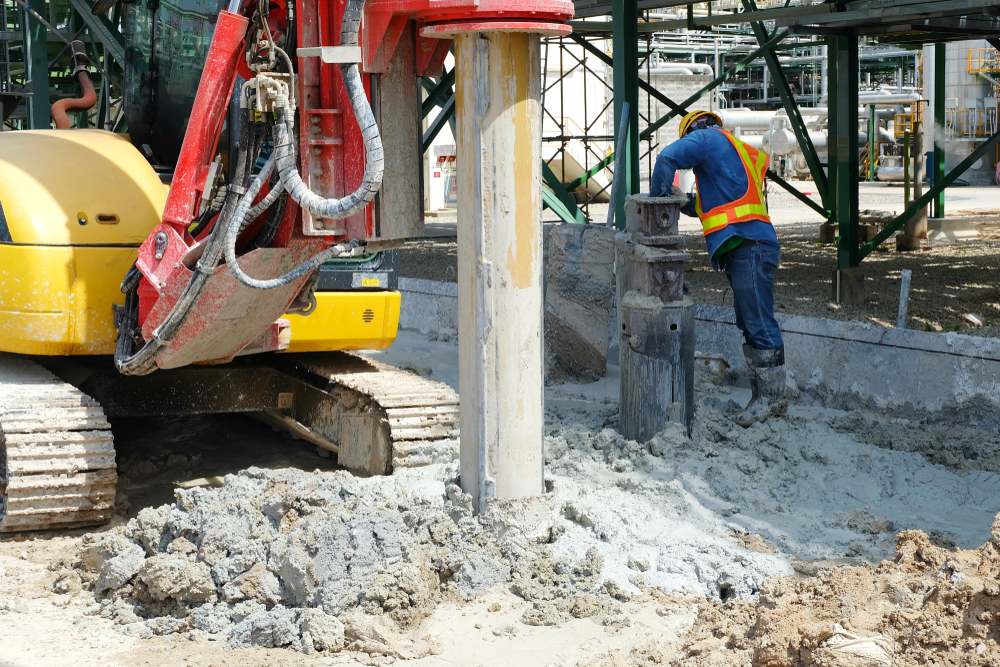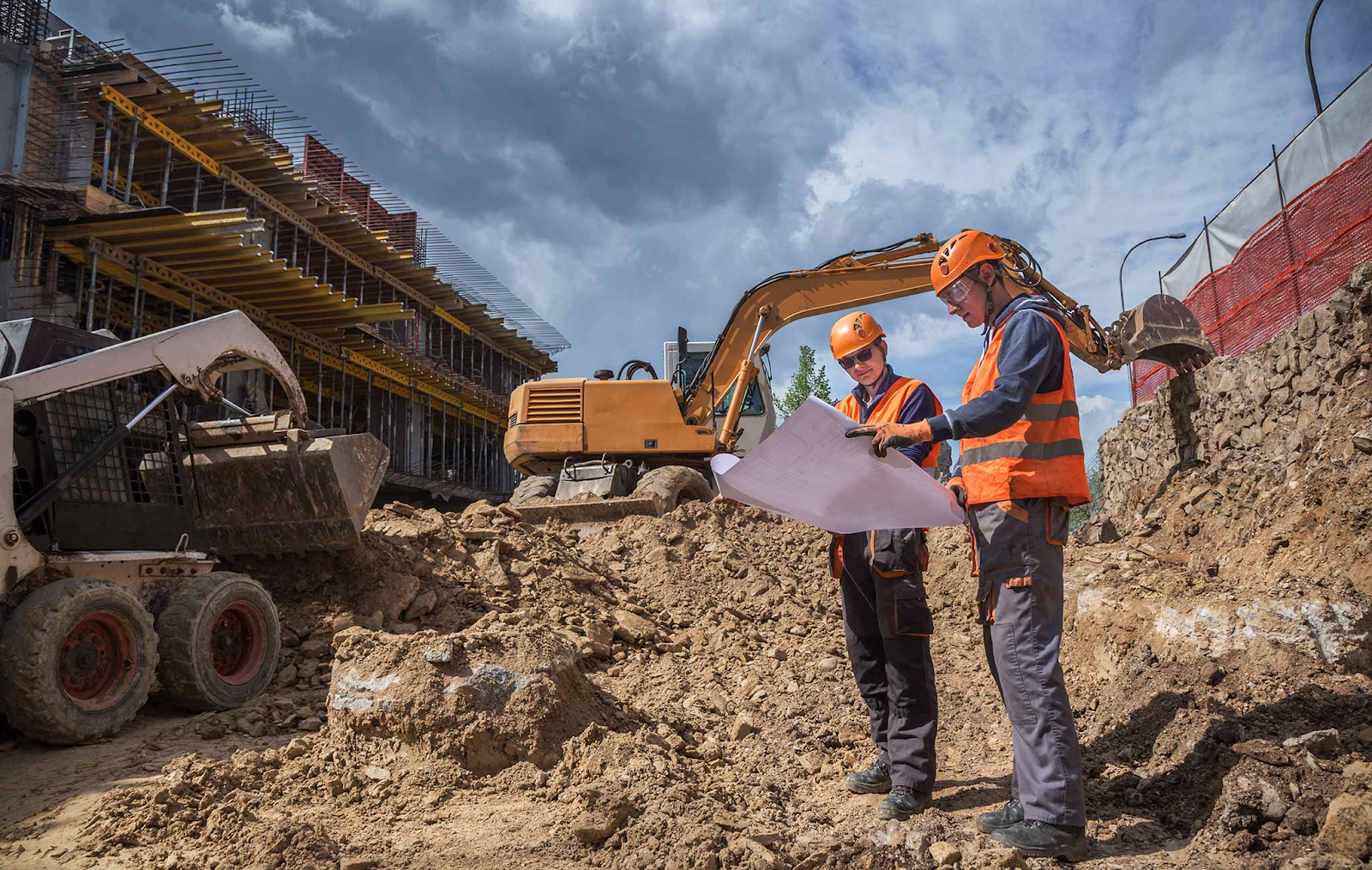An Unbiased View of Geotechnical Engineering For Construction Projects
An Unbiased View of Geotechnical Engineering For Construction Projects
Blog Article
The Definitive Guide for Geotechnical Engineering For Construction Projects
Table of ContentsGeotechnical Engineering For Construction Projects Fundamentals ExplainedThe Facts About Geotechnical Engineering For Construction Projects UncoveredSome Known Factual Statements About Geotechnical Engineering For Construction Projects The Single Strategy To Use For Geotechnical Engineering For Construction ProjectsLittle Known Facts About Geotechnical Engineering For Construction Projects.The Basic Principles Of Geotechnical Engineering For Construction Projects
The function of geotechnical engineering significantly handles realizing the features of dirt and rock, which might differ substantially by their thickness, moisture web content etc. These functions must be examined by geotechnical designers to anticipate their motions under different conditions. The safety as well as security of structures are impacted by soil problems, making this evaluation essential.A geotechnical engineer will examine dirt to figure out the bearing capacity of the planet and advise proper structure kinds, such as shallow structures, deep foundations like piles, or specialized solutions like floating structures for soft soils. Understanding the functions and actions of soil and rock, along with how they connect with buildings that have actually been put up on or within them, is just one of the key descriptions for why geotechnical design is necessary.
Along with architectural planning and building, geotechnical engineering is also important to the reconstruction and maintenance of pre-existing frameworks. Age-related destruction or extra issues can influence a framework's security and performance. Environmental management is accomplished via geotechnical engineering. Experience in air, water, and dirt high quality upkeep is used by geotechnical designers to decrease the unfavorable effects of projects.
To sum up, geotechnical design is an important discipline that preserves the durability and integrity of civil infrastructure. Geotechnical designers contribute to making structure tasks efficient all over the globe by recognizing the practices of earth products and using proper planning approaches.
Facts About Geotechnical Engineering For Construction Projects Revealed
The foundational security of any kind of project is essential. Geotechnical engineering plays a critical role in making sure that frameworks are improved strong ground, literally and figuratively. By analyzing soil, rock, and subsurface conditions, geotechnical designers supply important insights that assist in the style, building and construction, and upkeep of structures and infrastructure.

Some Known Details About Geotechnical Engineering For Construction Projects
Research laboratory screening: Establishing the homes of soil and rock. Area screening: Carrying out tests on-site to evaluate conditions. Analysis and style: Using information to design foundations, preserving wall surfaces, passages, and various other structures. Several top-level building and construction jobs have actually effectively utilized geotechnical engineering to guarantee their security and safety. As an example:: The world's tallest building required a deep understanding of the underlying geology.

As a leader in geotechnical design, BECC Inc. is committed to delivering cutting-edge and effective remedies that meet the highest requirements of high quality and safety and security., a mechanical engineer and geologist.
The Best Guide To Geotechnical Engineering For Construction Projects
Terzaghi additionally created the structure for concepts of bearing capability of structures, and the theory for prediction of the price of settlement of clay layers because of loan consolidation. Afterwards, Maurice Biot completely created the three-dimensional dirt combination theory, expanding the one-dimensional model formerly developed by Terzaghi to extra general hypotheses and introducing the set of basic formulas of Poroelasticity.
Geotechnical designers explore and identify the residential or commercial properties of subsurface problems and materials. They likewise develop matching earthworks and maintaining structures, passages, and structure foundations, and might monitor and assess sites, which might additionally involve website surveillance in addition to the risk analysis and mitigation of all-natural dangers - Geotechnical Engineering for Construction Projects. Geotechnical engineers and design geologists execute geotechnical examinations to obtain details on the physical residential or commercial properties of soil and rock hidden and beside a website to develop earthworks and foundations for this hyperlink proposed structures and for the fixing of distress to earthworks and frameworks caused by subsurface problems.
Everything about Geotechnical Engineering For Construction Projects
Geologic mapping and analysis of geomorphology are typically finished in consultation with a geologist or design rock hound. Subsurface expedition generally entails in-situ screening (for instance, the common infiltration examination and cone infiltration test). The excavating of test pits and trenching (particularly for situating mistakes and slide airplanes) might likewise be utilized to discover soil problems at deepness. Still, they are often made use of to allow review a rock hound or engineer to be reduced into the borehole for straight aesthetic and hand-operated evaluation of the soil and rock stratigraphy. Various dirt samplers exist to satisfy the requirements of various design jobs. The common penetration test, which utilizes a thick-walled split spoon sampler, is the most usual way to gather disturbed examples.

Generally, the interface's specific geometry is unidentified, and a simplified interface geometry is thought. Finite inclines call for three-dimensional designs to be analyzed, so most slopes are assessed assuming that they are definitely broad and can be stood for by two-dimensional models.
The smart Trick of Geotechnical Engineering For Construction Projects That Nobody is Discussing
The observational technique may be called adheres to: General exploration adequate to establish the harsh nature, pattern, and residential properties of down payments. Assessment of the most possible conditions and the most undesirable imaginable deviations. click here for more Creating the design based upon a functioning theory of habits prepared for under one of the most potential problems. Option of amounts to be observed as building and construction proceeds and calculating their anticipated worths based upon the functioning theory under the most unfavorable problems.
Dimension of quantities and evaluation of real conditions. It is improper for jobs whose layout can not be changed throughout building.
Report this page